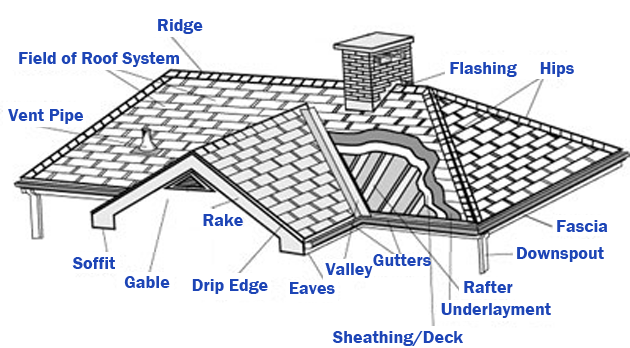When exploring metal roofing options for your home, it’s important to familiarize yourself with the terminology associated with this type of roofing. Understanding metal roofing terms can help you make informed decisions and communicate effectively with roofing professionals. In this article, we will provide a comprehensive guide to common metal roofing terms, ensuring you have a solid foundation of knowledge before embarking on your roofing project.

Key Metal Roofing Terms:
- Metal Roofing Panels: These are the individual sheets or sections of metal that are installed on the roof. They come in various profiles, shapes, and sizes to accommodate different architectural styles and preferences.
- Standing Seam: A popular metal roofing profile characterized by raised seams that interlock vertically. This design enhances the roof’s aesthetic appeal and provides excellent water resistance.
- Galvanized Steel: Steel coated with a layer of zinc to prevent corrosion and extend the lifespan of the metal roofing panels.
- Aluminum: A lightweight metal often used for roofing due to its corrosion resistance and durability.
- Copper: A premium metal roofing material known for its distinctive appearance and long lifespan. It develops a unique patina over time.
- Roof Pitch: The steepness or angle of the roof. It influences drainage, aesthetics, and overall structural design.
- Flashing: Thin metal pieces installed around roof penetrations, edges, and valleys to prevent water infiltration and direct water away from vulnerable areas.
- Soffit: The underside of the roof overhang that extends from the eaves to the wall. Soffits are often ventilated to promote airflow in the attic.
- Fascia: The horizontal board that covers the rafter ends and supports the bottom edge of the roof’s overhang.
- Underlayment: A protective layer installed between the roof deck and the metal panels to provide an additional barrier against water and moisture.
- Condensation: The process of water vapor turning into liquid water when it comes into contact with a cold surface, potentially leading to moisture-related issues in the roofing system.
- Ridge Vent: A ventilation component installed at the peak of the roof to allow hot air and moisture to escape from the attic.
Benefits of Understanding Metal Roofing Terms:
- Informed Decision-Making: Familiarity with metal roofing terms enables you to make educated choices when selecting materials, profiles, and contractors for your roofing project.
- Effective Communication: When discussing your roofing needs with professionals, using the correct terminology helps convey your preferences and requirements accurately.
- Understanding Specifications: Reading product specifications and installation instructions becomes easier when you grasp the meaning of key metal roofing terms.
Conclusion:
Gaining a clear understanding of metal roofing terms is a valuable asset when embarking on a roofing project. Whether you’re planning a new roof installation or considering a replacement, knowing the basics of metal roofing terminology empowers you to make informed decisions and communicate effectively with roofing professionals. By familiarizing yourself with these terms, you’ll have the confidence to navigate the world of metal roofing and achieve a successful roofing project that meets your aesthetic and functional needs.



Leave a Reply